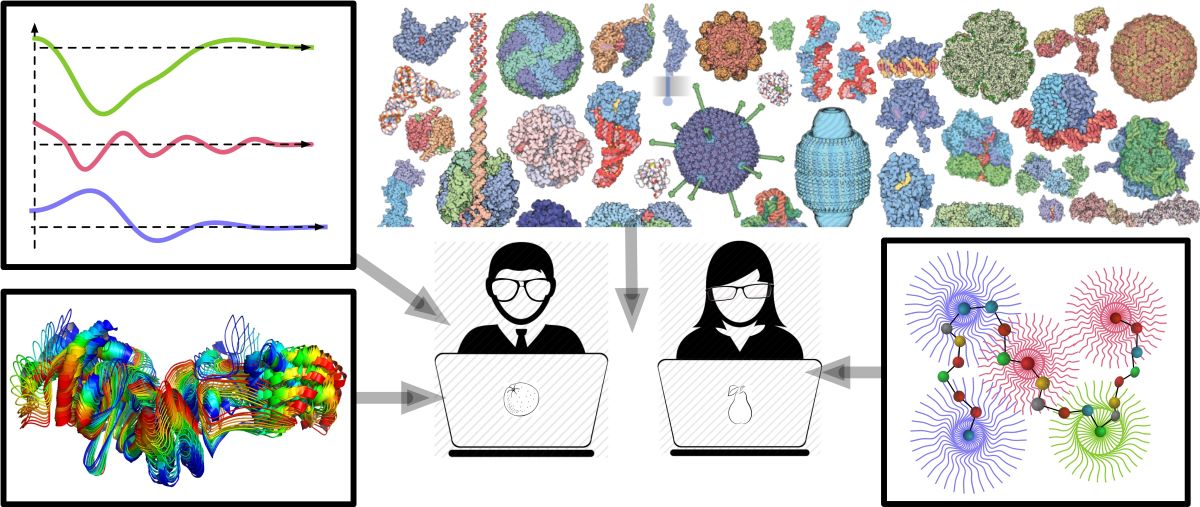Speaker
Description
Proteins are inherently dynamic, exhibiting conformational freedom on many timescales,[1] implicating structural rearrangements that play a major role in molecular interaction, thermodynamic stability and biological function. Intrinsically disordered proteins (IDPs) represent extreme examples where flexibility defines molecular function. In spite of the ubiquitous presence of IDPs throughout biology, the molecular mechanisms regulating their interactions remain poorly understood. We use NMR spectroscopy, in combination with biophysical tools and molecular modelling, to develop a unified description of the structure and dynamics of IDPs as a function of environmental conditions, from membraneless organelles to in-cell,[2-7] and to map their complex molecular recognition trajectories at atomic resolution, from the highly dynamic free-state equilibrium to the bound state ensemble.[8]
Examples include the replication machinery of Measles virus, where we use NMR to characterize the 92 kDa complex formed between the highly disordered phosphoprotein and the nucleoprotein prior to nucleocapsid assembly – a process that we can also follow in real-time.[9] These proteins undergo liquid-liquid phase separation upon mixing and we can combine NMR and fluorescence to describe the molecular basis and functional advantages of this phenomenon.[10] NMR also sheds new light on the molecular basis of host adaptation of influenza polymerase, via a highly dynamic interaction,[11] and reveals the dynamic assembly of SARS-CoV-2 nucleoprotein with its viral partner nsp3.[12]
[1]. Lewandowski et al Science 348, 578 (2015)
[2]. Jensen et al Chem Rev 114, 6632 (2014)
[3]. Abyzov et al JACS 138, 6240 (2016)
[4]. Salvi et al Angew Chem Int Ed. 56, 14020 (2017)
[5]. Salvi et al Science Advances (2019)
[6]. Adamski et al JACS (2019)
[7]. Guseva, Schnapka et al JACS (2023)
[8]. Schneider et al JACS 137,1220 (2015)
[9]. Milles et al Science Advances eaat7778 (2018)
[10]. Guseva et al Science Advances (2020)
[11]. Camacho-Zarco et al Nature Communications (2020), Camacho-Zarco, Lu et al JACS (2023)
[12]. Bessa, Guseva, Camacho-Zarco et al Science Advances (2022)

